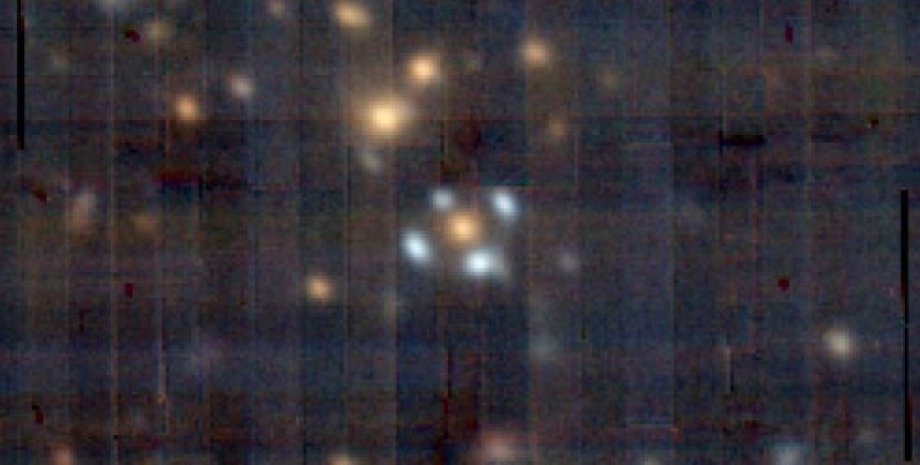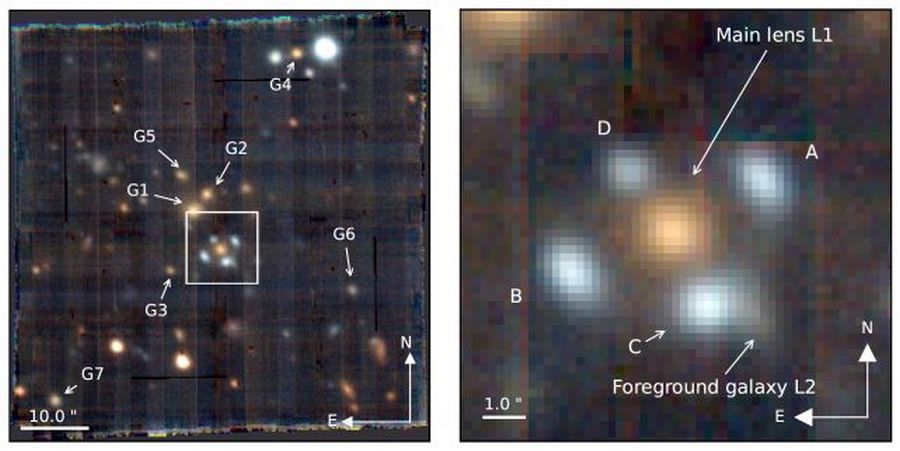A massive galaxy created a rare curvature in the path of light that took billions of years to reach us. In the resulting photograph, it is noticeable how the curvature of space-time around a massive object in the foreground divides the light behind it into four parts, like the points of a cross. This phenomenon is called the Einstein cross. Its observation and analysis add to a growing catalog of these rare phenomena that may help us better understand more distant regions of the Universe.

Spacetime is not uniform. Gravity causes it to bend, which creates interesting effects with any light passing through it. Basically, we observe this with the help of a so-called gravitational lens.
But the light distorted by gravity is not always obtained in the form of a lens. Sometimes the light is smeared, sometimes mirrored. But if the alignment is correct, you can see four duplicates located around the object in the foreground.
Led by astronomer Aleksandar Cikota from NOIRLab NSF, an international team of scientists has confirmed a particularly remarkable example in the Legacy Imaging Surveys data of the Dark Energy Spectroscopic Instrument (DESI).
Confirmation of Einstein Cross
The gravitational lens was first discovered in 2021. But further observations using the MUSE instrument of the Very Large Telescope (VLT) confirmed another classification of the gravitational lens in the form of an Einstein cross.

The resulting image shows a massive red galaxy in the foreground. There are four blue lights around it; these are duplicated images of a more distant lens galaxy. Together, the system was named DESI-253.2534+26.8843.
The researchers also conducted simulations using software called GIGA-Lens, a framework for modeling strong gravitational lenses. This has allowed them to quickly and accurately calculate the properties of the system, finding that the total stellar magnitude of the source galaxy is 10.47. They could also investigate the influence of a smaller galaxy in the foreground, which has a weaker lens effect.
More gravity lenses in the future
This information is important for studying the properties of lens galaxies in the distant Universe. Magnification allows us to see them in more detail. But it is necessary to clearly understand exactly how the lens affects the light passing through it. The team’s work shows that with the help of modeling, we can get the properties of a gravitational lens faster than we could before.
“This discovery specifically demonstrates the very promising future of modeling strong lens systems, which are expected to be discovered in the next decade,” the scientists summarize in their conclusion.
Earlier we reported on how the gravitational lens of the Sun would help to see exoplanets.
The study was accepted into the publication of The Astrophysical Journal Letters and is available on arXiv.
Follow us on Twitter to get the most interesting space news in time
https://twitter.com/ust_magazine

